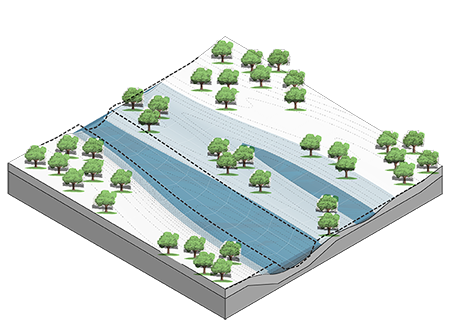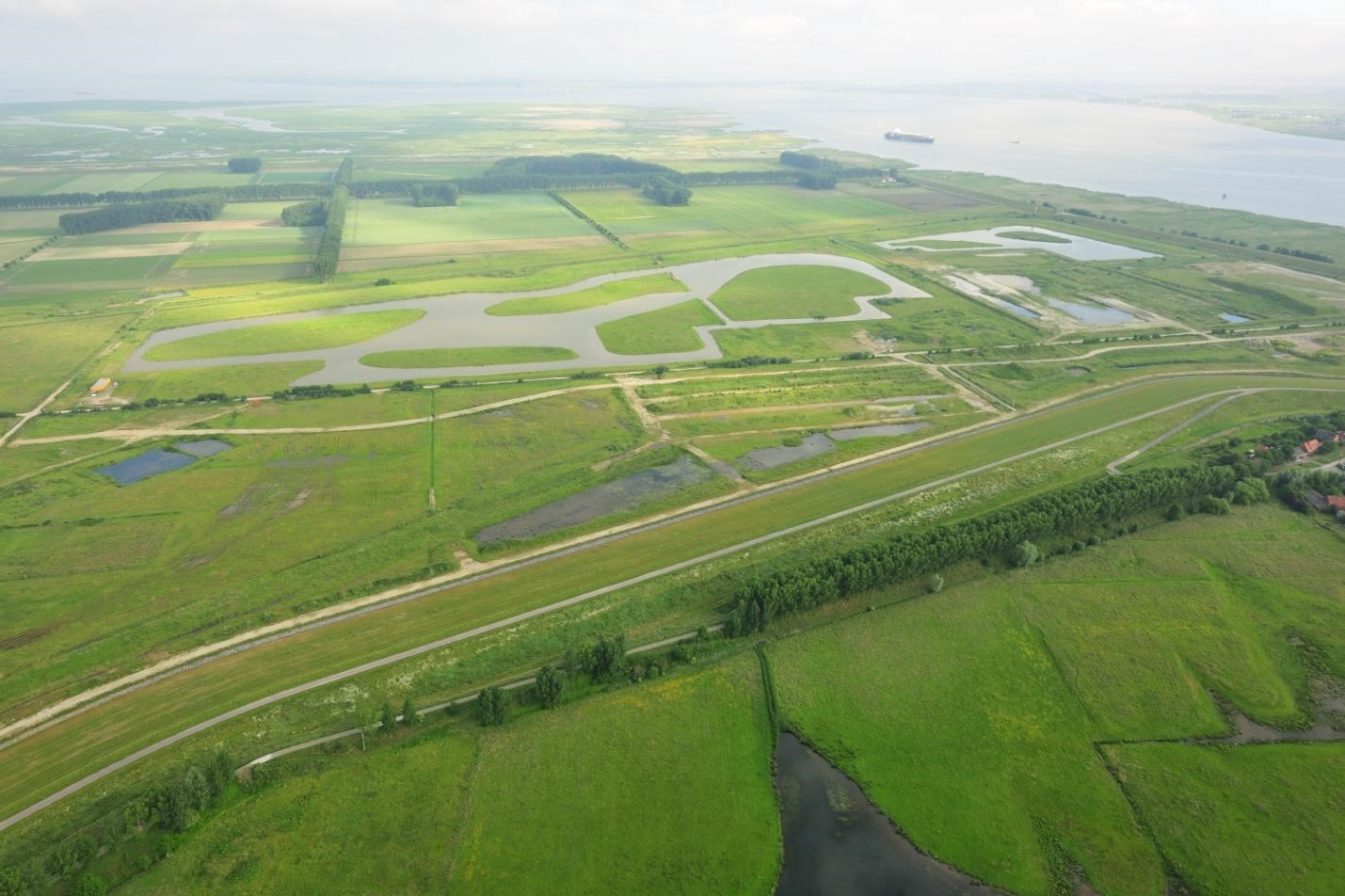Rivers, Streams, and Floodplains
Floodplains are the areas of low-lying ground adjacent to rivers, formed mainly of nutrient-rich river sediments and subject to flooding after storms and heavy snowmelt. Floodplains tend to be flat and fertile in large part because of the very process of flooding, having received deposits of sediment and soil over millennia and evolved ecosystems that are adapted to, and reliant upon, the regular inundation of floodwaters. These ecosystems that occupy a floodplain may contain a wide array of habitats, from freshwater marshes to forests to vegetated lowlands, and serve important ecological roles for numerous plant and animal species. The shape and nature of a floodplain may also change over time as the main channel of a river naturally migrates through erosion and accretion, impacting how and where excess water may first overtop the banks of the river during a flood event.
While most people view a river or stream only as the place where there is regularly flowing water, the reality is that the river and floodplain are one integrated system that have evolved over time to convey water and sediment downstream, with the floodplain serving to both store water and to slowly release it back into the main channel of the river as the flood passes, to ensure that the natural system downstream isn’t overwhelmed.
Hazard Mitigation
During floods, floodplains essentially increase the ability of a river to move or convey floodwaters. Initially during a flood, as more water enters the river or stream, the height of the water rises. Once the volume of water exceeds what the river channel is capable of carrying, it spills out onto the floodplain and the rate at which the waters rise increases much more slowly because any additional volume of water spreads out into the much larger capacity provided by the floodplain. Floodwaters move much more slowly on floodplains and so very extensive floodplains can act something like a reservoir that temporarily stores water, slowly releasing it back to the river as the flood recedes. Additionally, by slowing the speed of floodwaters, floodplains are also able to reduce the impact of erosion downstream.
The shape, size, and composition of any floodplain will determine how effective it is at storing and slowing floodwaters, and any encroachments that impact those factors may reduce the effectiveness of flood storage in an individual floodplain and may have cascading impacts downstream.

Threats
The primary threat facing floodplains is development or encroachments into the natural floodplain. In general floodplains are delineated and managed based on the volume of water or the size or likelihood of a storm that they can handle (i.e. the 100 year floodplain). While efforts have been made to tailor floodplain management in such a way as to reduce the impacts of flooding on the built environment, far too often this designation does not take full account of the entirety of a natural floodplain, instead focusing only on areas where water moves rapidly during flooding events.
An extension of development within the floodplain is the desire to channelize or control how a river moves as a means of protecting built infrastructure within the floodplain. The proliferation of levies, berms, dams, and other means of restricting the natural movement of a river has dramatically changed the hydrology of many river systems and disconnected waterways from their natural floodplains, resulting in loss of habitat and the natural flood reduction benefits that those natural systems provide.
Co-Benefits
In addition to flood and erosion reduction, healthy floodplains provide a wide array of benefits. Improved water quality and abundant supplies of freshwater are essential for the long term health of any community and floodplains play a big role in providing both. When inundated with water, floodplains act as natural filters, removing excess sediment and nutrients, which can degrade water quality and increase treatment costs. Additionally, once waters have spread out on to the floodplain, water flow is slowed and has more time to seep into the ground where it can replenish aquifers, which serve as a primary source of water for many communities.
Floodplains also play a vitally important role in supporting the broader ecological health of the watersheds in which they are found. Thanks in part to the natural flooding process, floodplains are home to some of the most biologically rich habitats on Earth, providing spawning grounds for fish and critical areas of rest and foraging for migrating waterfowl and birds.
Many of these species that rely upon naturally functioning floodplains are also commercially or recreationally important, thus providing the underpinnings for local economies built around the multibillion dollar outdoor recreational industry. Activities like fishing, hunting, camping, hiking, wildlife watching and boating are all dependent on the natural processes of rivers and healthy floodplains and the groundwork they provide for healthy ecosystems.
Additional Resources
A HUD sponsored taskforce authored a report entitled “The Natural and Beneficial Functions of Floodplains” in 2002. The report lays out the benefits of floodplains as well as challenges that they are facing and includes recommendations from the taskforce and a set of case studies.
The Association of State Floodplain Managers has a wide array of resources regarding floodplains on their website
FEMA has compiled guidance on floodplain management

